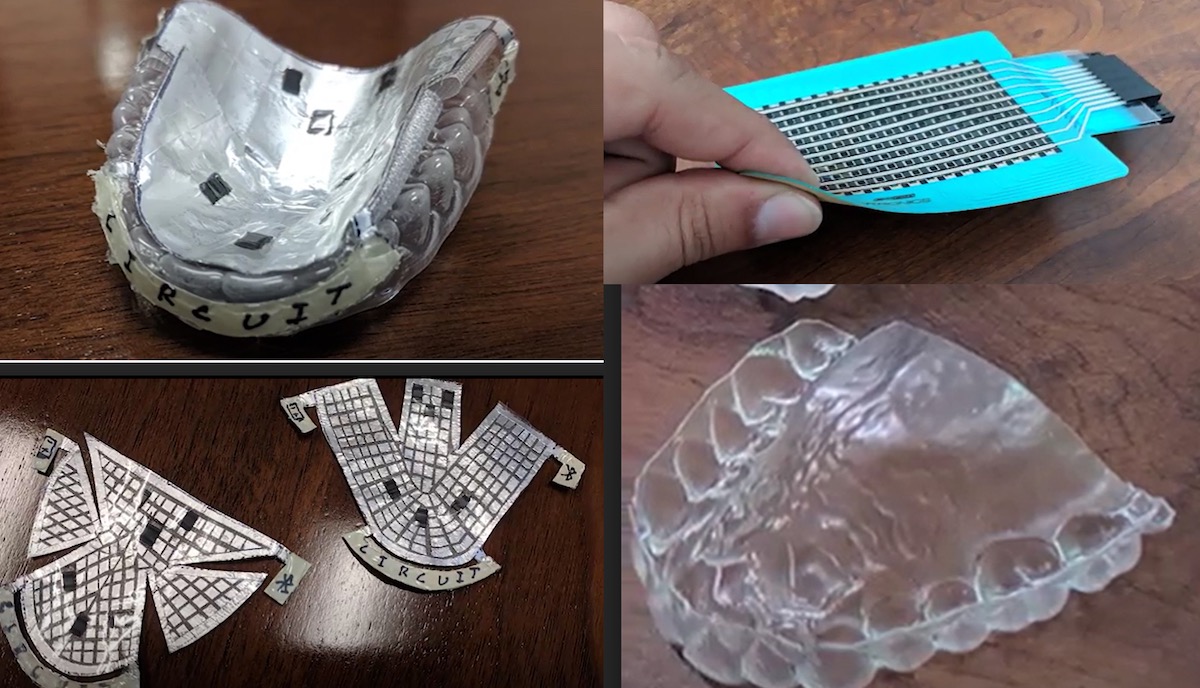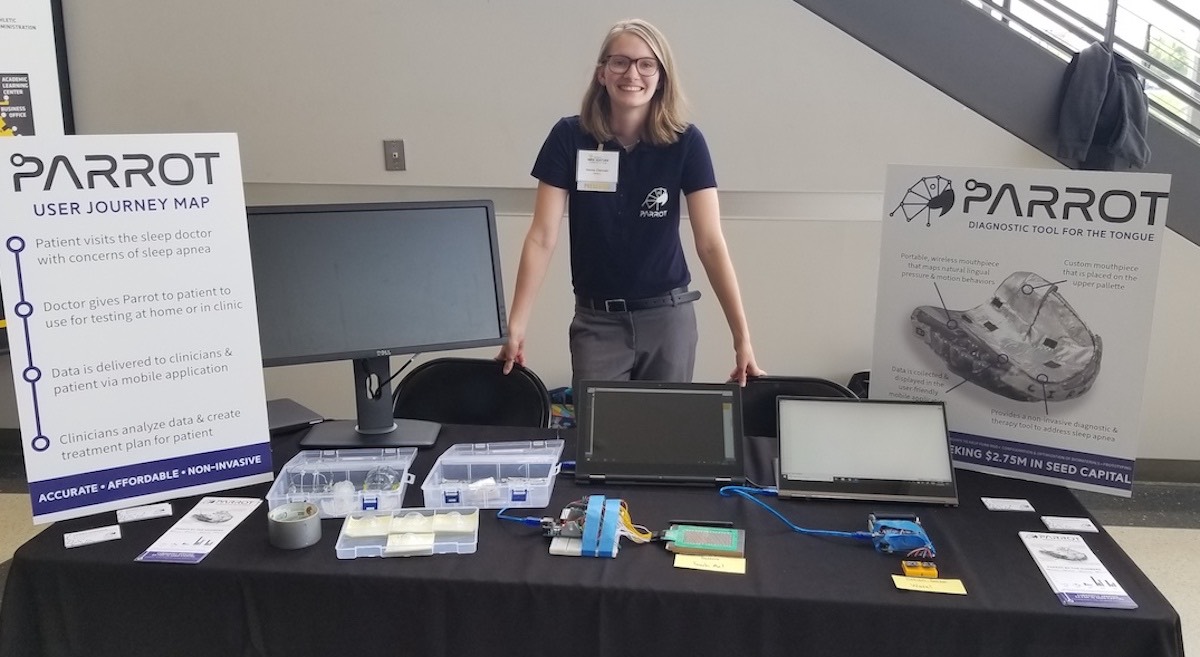Hanna Chastain’s professor quickly saw something special in her when, as a freshman, she completed an independent research project typically reserved for older students.
“She immediately showed an above-typical level of critical thinking skills and what is needed within research,” said Dr. Heidi Bell, an assistant professor in the Department of Human Performance Studies at Wichita State University. “She had that study done probably halfway through the semester, which is not typical of even my graduate students. I knew right then that she was definitely a student who excelled above and beyond.”
Chastain, a junior biological sciences major with a biomedical emphasis, continues on a similar research track working in Dr. Bell’s lab. In April, she will present virtually at the National Council on Undergraduate Research conference. Her presentation is titled “Development of PARROT, a Wireless Orofacial Myofunctional Imaging and Pressure Mapping Device.”
PARROT, a project that started in 2014 at Wichita State, is a device that is worn like a mouthpiece and is designed to screen and diagnose orofacial disorders, such as sleep apnea, dysphagia, malocclusions, tongue thrusts and articulation. Many of those disorders, Chastain said, are characterized by the actions of the tongue.
“Movements of the tongue,” Chastain said. “If someone is going to speech therapy or a speech pathologist, it could help them figure out what the tongue may be doing wrong. It sits on the upper palate and teeth and it has sensors integrated into it, so it captures what the tongue is doing.”
The project is named PARROT, a depiction of what the device is intended to do. Similar to a parrot bird, which is known to mimic words and actions, PARROT will mimic the behavior of the tongue while recording real-time objective data of those behaviors.
 Courtesy photo
Courtesy photo“The mouth is really small and it’s hard to see what’s going on inside,” Chastain said. “When you’re in a clinical setting, it’s very hard to get natural movements in readings from somebody. We wanted a device that the person could wear, essentially whenever, and it doesn’t impede what they do naturally.”
Chastain, from Wichita, joined the team in 2019. The COVID-19 pandemic slowed research because of the difficulty testing the device on patients.
“We’re trying to see what clinicians want from it, what they need the device to do,” she said.
Chastain said she enjoys the interdisciplinary aspects of this project. She is also intrigued by potential work in medical devices that can help patients.
“This has been a fascinating process,” she said. “It opened my eyes to all the different things you have to consider. The FDA regulations. The physical prototype. How would it affect the user who is wearing it?”
Since 2019, Chastain was accepted into Wichita State’s First Year Research Experience (FYRE) and won third place in the Shocker New Venture Competition for a presentation on PARROT. She was part of the team that presented, or was accepted to present at conferences such as the 2020 Annual American Speech Language and Hearing Association Convention and the 2020 Kansas Honors Connections Conference.
“She’s very ambitious, very eager,” Bell said. “When she commits to something, she wants to do her best and excel at it. She digs into the research and the review of lit to make sure that she is doing the best she can.”


 Courtesy photo
Courtesy photo